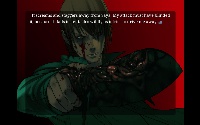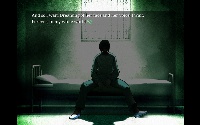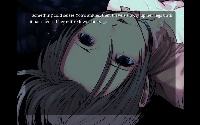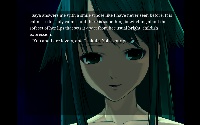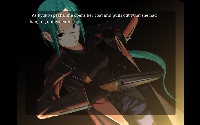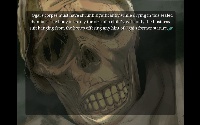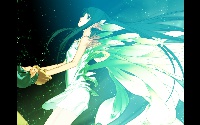Saya no Uta
Playtime: 3.9 Hours
Finished 07 November 2023.Playthrough of the censored Steam/JAST version, which cuts out all the sex scenes but leaves the surrounding context intact so not much is actually missed. The remaining CGs with nudity aren't actually censored though. Read every ending in order, starting from the "bad" ones first.
The BG for this page is obviously fanart, but I couldn't find a definitive original source or artist after searching around for a while. I'll probably update this if I ever find out where the piece first came from.
This game was quite a bit shorter than I expected, ending at just under 4 hours when I expected anywhere from 6-10 hours total. There's probably a few reasons for this - firstly, I'm playing the censored version which removes all of the sex scenes. Also, this writing of this game focuses quite heavily on describing the internal thoughts and actions of characters as opposed to voiced dialogue lines and conversations between characters - so for anyone who reads even moderately quickly a majority of the game will pass by quite quickly. Playing on auto and fully watching each end will also extend playtime significantly - but as endings 2 and 3 are extremely similar with only a few key differences, I was able to skip about 90% of the actual ending 3 (True End) route because several of the sequences were exactly equal to ending 2. All of this probably changes my perception of the pacing and direction of the game a bit, but I still felt it was a very interesting game nonetheless.
For such a short game, Saya no Uta is really a presentation of a horror concept more than it is a complete world and story. You don't really ever get to "know" the characters in the game's brief runtime - each one pretty much exhibits a number of fairly archetypal traits and the writing never tries to reach beyond those boundaries. Each one of them exists solely for the purpose of being a means to an end: Omi as the sacrificial lamb that sets off the events, the painter & his family as another way to showcase how Saya is able to transform humans, Yoh as yet another experiment in slavery and conversion of a different kind. All of the perspective switching gives a more top-down, play-by-play view of the events as they unfold as more of an observer than a participant. These switches are crucial to understanding Fuminori's insanity and the concerns of his former friends, and a key element to the unsettling atmosphere of the game is seeing Fuminori's increasingly muted reactions towards the absurd things that he does in his world, mirrored through the reactions of normal people in the real world.
The plot of the game was actually quite straightforward with all things considered. The writing never tries to sit and stew on any "mystery" for very long; pretty much anyone playing the game can very quickly clue into each of the revelations before they are revealed in the game - Saya not being human is clear very early on when she kills Omi. However, instead of trying to spin it as some growing mystery, Fuminori picks up on the nature of Saya and the cannibalism a few scenes later - but decides to lean into his new life as his sanity breaks down. With that said, near the end of the game these ideas start to run out so the last major sequence is pretty much a scene from a slasher which is a pretty neat climax to end the game on, yet also makes it very clear that there isn't really anything left of the concept to explore. The endings are kind of interesting - because there is no set perspective, it's hard to interpret any of the three endings as particularly good. In the first two, the world is spared at the expense of the characters' sanity - these are technically the "good ends" for mankind. In the last, Saya blossoms in accordance with her original purpose, having found the love she needed to fulfill her function to spread her mutations globally. Obviously this doesn't bode well for the people on Earth, but it's still a "good" end in the sense that it fulfills Fuminori's and Saya's arc.
The things that the story of the game is able to do well are not without some serious shortcomings; things that need to be conveniently set aside for the sake of maintaining a focused narrative. The most glaring one is the stupidity of the cast - it's hard to believe their entire friend group went for months without seriously noticing anything about his personality, his disgusted reactions, or his dilapidated house & yard. Every victim pretty much decides to walk into the traps one-by-one (Omi, Yoh, the painter guy kinda, Koji) without any kind of sense - in TF2, this is called "chain feeding" which is about as accurate a description as I could put here. The game would have been about 30 minutes long with one ending if any single one of these morons decided to call the police or decided to see him together. This does kind of destroy the atmosphere to an extent because it's impossible to relish any kind of success built on exceptionally stupid & nonsensical decisions. That aside, there's also a lack of explanation on Fuminori's insane perception changes; by the time that he was being operated on Ogai was already dead, and Saya hadn't discovered him yet either. Also note that Saya didn't even know she could rewire people in the same way until much later. That Fuminori just happened to hallucinate Saya as a cute girl instead of some kind of slime/tentacle thingy is basically just a freak occurrence.
The quality and style of the artwork in this game is really inconsistent. It's not necessarily bad but it can feel really incoherent at times. Portrait sprites seem to be done in a kind of 'pastel' style with thick lines and broad shading, some character CGs (like the painter's family) appear to be in a more detailed yet amateur style, but a select few illustrations (mostly of Ryoko) look a lot better. Similarly, some of the background art is drawn while others seem to be photographed with wildly varying quality - for seemingly no reason. Given that there is only a single artist credited, I can only assume that this was all done by one person - probably their first work, if I had to guess. Most of the actual horror is also kept off screen; you never really get to see what Saya looks like, and most other abominations pretty much look like generic tentacle/slime blobs - outside of maybe 1 or 2 illustrations, the game is visually very tame for a horror game. I don't have any issues with that being the case, but in general for all the reasons described above I'd consider this to be a very mediocre game visually. The soundtrack isn't really anything to write home about either.
This was a pretty cool experience, if only for the concepts that it brings up. That being said, I imagine a lot of the impact it had on me only really took hold because I don't often play horror games, else this would probably just look like another drop in the bucket. It more or less achieves its objective in a very mechanical & utilitarian fashion, but has very little personality beyond that to create any kind of emotional bond with the player. Down the line, I don't think I'll retain much from my playthrough beyond this being kind of a weird game.
Might as well add an extra comment about the censorship stuff, which as usual riles up VN readers to no end. I personally decided to play the censored version as released on Steam, even though a decensor patch is readily available; a common opinion is that the sex scenes don't add anything substantial to the game as the context surrounding each one still remains. They do tend to portray more sinister connotations in this game - rape, slavery, insanity, etc. - but it's pretty trivial to decipher this without sitting through 10-15 minutes of moaning and sex noises each time. In most other VNs the H scenes usually seem to derail the momentum of the plot, and I fully expect that the same thing would apply to this game if I added the scenes back in. For most people claiming that they are crucial to character development or w/e, I personally think they just want fap material (which would be very questionable for this game).

